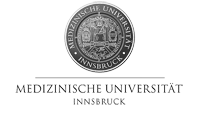|
|
 |
2nd Dep. of Pediatrics Semmelweis University Faculty of Medicine, Budapest, Hungary
Treatment of pediatric malignance has markedly improved in the last decades, however the intensive therapy may have long-term side effects. In the present work we analyzed the late pulmonary toxicity.
73 patients were involved (age: 8-30 years, average: 18,7). The diagnosis was osteosarcoma in 10 patients, lymphoma in 37 pts, acut lymphoid leukaemia in 16 pts and other solid tumors in 10 pts. The study was carried out 1-19 years after the chemotherapy (average: 5,4 years). The mediastinal and / or cervical irradiation were also considered (33 pts).
Methods: static (FVC, RV/TLC) and dynamic ( FEV1.0, Tiffeneau index, MEF 25 %) parameters of the pulmonary functions , and diffusion capacity (T1co, K1co) was examined as well.
Results: In 27/73 (35,2%) cases significant differences( < 80% of normal values) in dynamic, 14/73 (19,2%) in static parameters and 22/73 (30,1 %) in diffusion capacity could be detected. In case of the children treated with radiotherapy 26/33 (78,8%) displayed abnormal dynamic values, in 4 patients (12,1%) both static and dynamic parameters were reduced and the diffusion capacity showed differences in 10 cases (33,3%).
Conclusion: high proportion of children developed significant changes in pulmonary functions. Not only restrictive-like pulmonary insuffiency, but obstructive and diffusion dysfunctions could also be detected. Further investigations are necessary to prove the clinical significance of detected late pulmonary toxicity.
